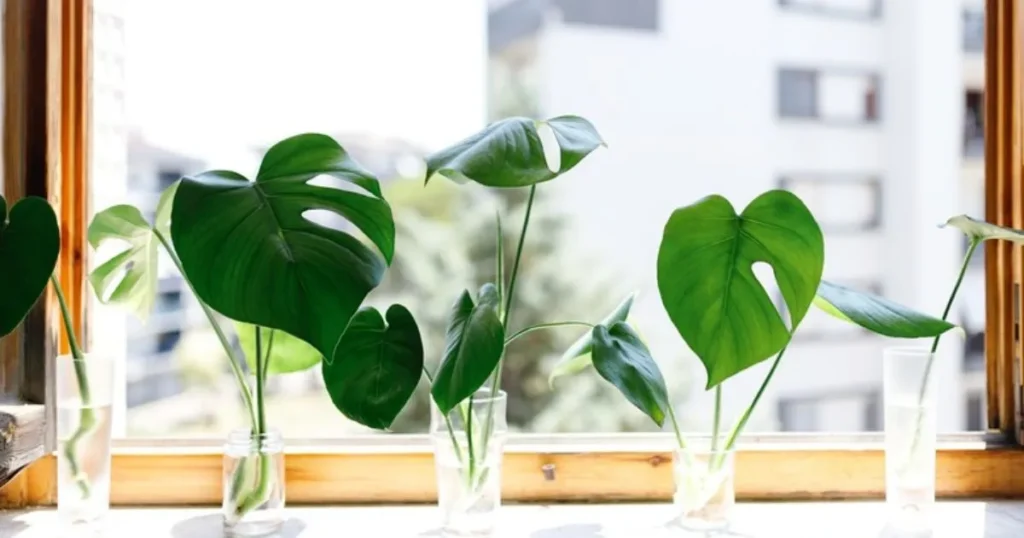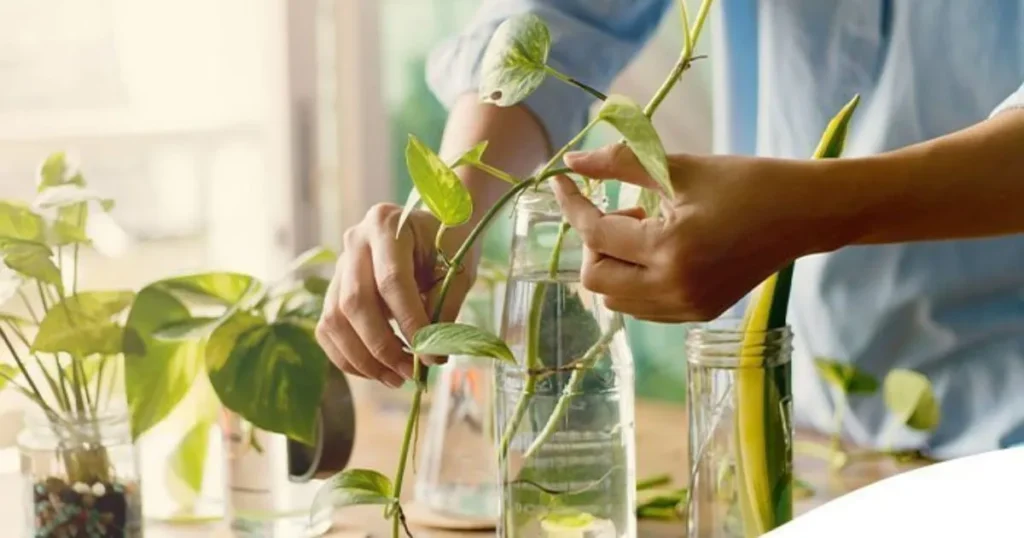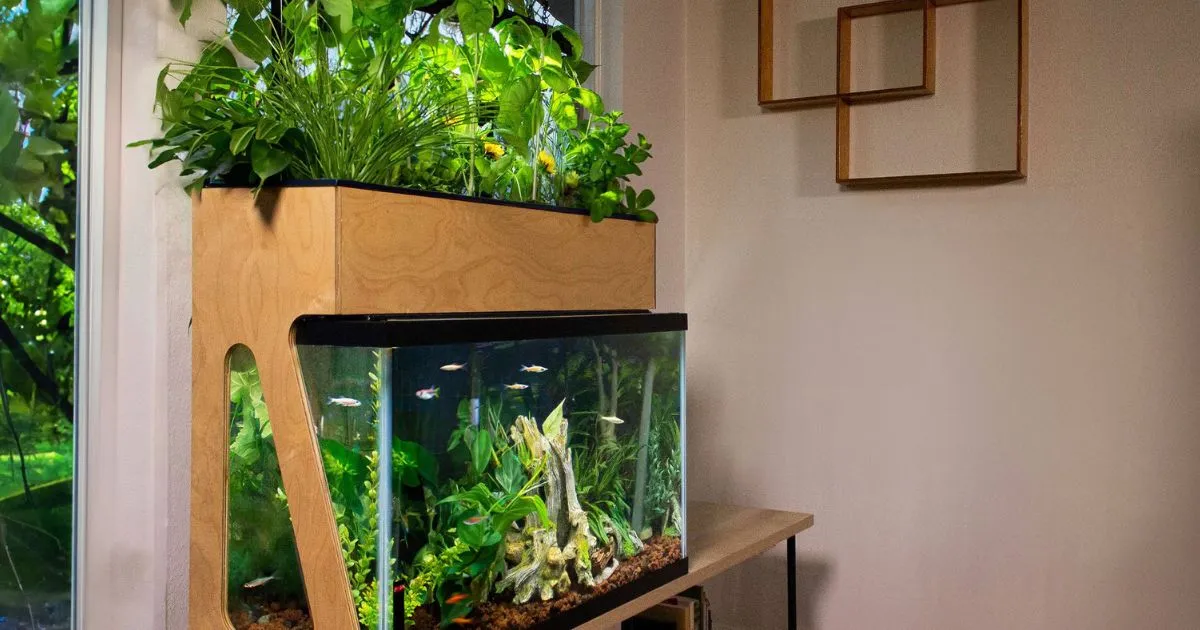Table of Contents
Inside Water Plants
Introduction to Water Plants:
Water plants, or aquatic plants, are plants that grow in or around water, whether in oceans, rivers, ponds, lakes, or wetlands. These plants have evolved over millions of years to adapt to submerged, floating, or waterlogged environments. The uniqueness of water plants lies in their ability to thrive in an aquatic setting, with adaptations that allow them to live submerged or partly in water. These plants provide vital ecological functions, contributing to the balance of aquatic ecosystems and offering support to a variety of organisms.
The diversity of water plants is vast, spanning a wide range of species. They vary from tiny microscopic plants like phytoplankton to towering giant water lilies, each with their own special ways of living and growing within their environments. Water plants are often overlooked in mainstream discussions of nature, but they play an essential role in maintaining the health of aquatic ecosystems and the broader environment.
Characteristics of Water Plants
Water plants possess several distinguishing characteristics that allow them to thrive in aquatic environments. These adaptations help them conserve energy, absorb nutrients, and interact with their environment effectively.
1. Leaf and Stem Adaptations
Water plants typically have wide, flat leaves that allow them to capture as much sunlight as possible. Sunlight is crucial for photosynthesis, and since water absorbs light, plants growing beneath the surface must find innovative ways to maximize exposure. The leaf surface is often covered in waxy coatings to reduce water loss and prevent rotting, which is common in submerged conditions.
Aquatic stems can be soft and flexible, enabling them to bend with the movement of the water. This flexibility is essential in preventing damage from waves or strong currents. Additionally, many water plants have hollow or air-filled spaces in their stems to aid buoyancy and allow the plant to float on the water’s surface.
2. Root System Adaptations
The root systems of water plants are specialized for their underwater environment. Submerged plants typically have fibrous root systems that anchor them to the bottom of water bodies, preventing them from being carried away by currents. Floating plants, on the other hand, have roots that dangle loosely in the water, absorbing nutrients from the water column rather than from the soil.
Water plants like the water lily have large, deeply penetrating roots that are capable of absorbing nutrients from the muck at the bottom of ponds, lakes, or slow-moving streams. These roots often have specialized structures to extract nutrients, particularly nitrogen and phosphorus, that are essential for plant growth.
3. Buoyancy and Floating Structures
One of the most critical features of many aquatic plants is their ability to float. Many water plants, such as duckweed and water lilies, have specialized cells that help them stay afloat. These plants have air-filled spaces within their tissues that provide buoyancy. In the case of submerged plants, air pockets within their stems, leaves, or tissues help them rise to the surface to access sunlight.
Floating plants can move in response to wind or water currents, but they are also rooted in the water below, allowing them to grow in the most favorable conditions for photosynthesis.
Types of Water Plants
Water plants are diverse, with several categories based on how they grow and interact with the water around them. Broadly, they are classified into submerged plants, floating plants, and emergent plants, each with unique structural and functional attributes.
Submerged Plants
Submerged water plants, as the name suggests, remain entirely underwater, with their roots, stems, and leaves submerged beneath the surface of the water. These plants often have highly specialized structures to absorb nutrients directly from the water rather than the soil.
One example of submerged plants is Eelgrass (Zostera spp.), which grows in shallow coastal waters, creating vast underwater meadows. Submerged plants like these play essential roles in providing oxygen to the water, stabilizing sediments, and offering food and shelter for a variety of aquatic species, from fish to microscopic organisms.

Notable Examples of Submerged Plants:
- Hydrilla (Hydrilla verticillata)
- Eelgrass (Zostera spp.)
- Tape Grass (Vallisneria spp.)
Floating Plants
Floating plants are those that remain on the surface of the water, with their roots extending into the water below. These plants are often adapted to floating freely, supported by air pockets or special tissues that keep them buoyant.
Floating plants are crucial to aquatic ecosystems. They provide shade and shelter for fish, reduce water evaporation, and help to absorb excess nutrients. Floating plants also contribute to maintaining the oxygen balance in aquatic environments.
Notable Examples of Floating Plants:
- Water lilies (Nymphaea spp.)
- Duckweed (Lemna spp.)
- Water Hyacinth (Eichhornia crassipes)
Emergent Plants
Emergent plants grow in shallow water, with their roots anchored beneath the water surface while their stems and leaves extend above it. These plants play an essential role in stabilizing the shoreline and preventing erosion. Their tall stalks provide shelter for wildlife, and their roots act as filters to help clean the water.
Emergent plants are often found at the edges of lakes, ponds, and rivers, where they contribute to the development of wetland ecosystems. They are also an essential food source for various species, including insects, birds, and mammals.
Notable Examples of Emergent Plants:
- Cattails (Typha spp.)
- Bulrushes (Schoenoplectus spp.)
- Reeds (Phragmites australis)
Adaptations for Survival
Aquatic plants have evolved numerous survival mechanisms to thrive in their specific aquatic environments. Their ability to adapt to different water depths, temperatures, and nutrient levels is crucial for their success.
1. Oxygenation of Water
One of the most important roles of water plants is oxygen production. Through the process of photosynthesis, they release oxygen into the water. This is essential for fish and other aquatic creatures that depend on oxygen for survival. In many freshwater ecosystems, submerged plants are the primary producers of oxygen, especially in areas where water movement is minimal, and the oxygen supply is limited.
2. Water Filtration and Purification
Water plants act as natural filters in aquatic ecosystems. Their roots and tissues absorb excess nutrients like nitrogen and phosphorus, which are often pollutants in water bodies. These nutrients come from agricultural runoff and wastewater, contributing to harmful algal blooms. Water plants help remove these nutrients, reducing the risk of eutrophication and improving water quality.
3. Protection from Sedimentation and Erosion
Emergent plants, especially those growing along shorelines, help protect water bodies from erosion. Their extensive root systems stabilize the soil and prevent sediment from washing away. This is particularly important in coastal areas, where the protection of shorelines against strong tides and waves is crucial.
4. Habitat Creation and Biodiversity
Water plants provide essential habitats for numerous aquatic creatures, from microscopic plankton to large fish and amphibians. Submerged plants create hiding spots for juvenile fish, while floating plants provide a resting place for insects and birds. The dense growth of aquatic plants increases biodiversity by supporting a variety of life forms in aquatic ecosystems.
Importance of Water Plants
Water plants play a pivotal role in maintaining healthy aquatic ecosystems. They are vital for the overall health of rivers, lakes, wetlands, and oceans. Some of the most important ecological contributions of water plants include:

1. Oxygen Production
Through photosynthesis, water plants release oxygen into the water. In densely populated aquatic environments, such as fish tanks, water plants play an essential role in maintaining healthy oxygen levels, which is critical for the survival of aquatic life.
2. Water Quality Improvement
As natural filters, water plants help to remove pollutants from the water. Excessive nutrients, heavy metals, and pollutants from agriculture or industry can be harmful to aquatic life, but water plants absorb these chemicals, improving water clarity and quality.
3. Erosion Control
Emergent water plants stabilize the banks of rivers and lakes. Their root systems hold soil in place, preventing erosion and sedimentation, which can lead to a decrease in water quality and aquatic biodiversity.
4. Habitat for Wildlife
Water plants provide food and shelter for a wide range of aquatic organisms. Fish, amphibians, and insects depend on aquatic plants for sustenance, protection, and nesting sites. Many species of birds also rely on water plants as a food source or breeding ground.
Conclusion
In conclusion, “inside water plants” are a fascinating and vital part of our ecosystems. Whether submerged in the depths of the water, floating serenely on the surface, or growing along the shoreline, these plants play critical roles in maintaining ecological balance. Through their contributions to oxygen production, water purification, habitat creation, and erosion control, water plants are indispensable for both the health of aquatic environments and the overall health of the planet.
The next time you observe a pond, lake, or river, take a moment to appreciate the water plants that support the life within those ecosystems. Without these remarkable plants, the aquatic world would be a much less vibrant place.
Frequently Asked Questions (FAQ)
1. What are the different types of water plants?
Water plants can be divided into three main types: submerged plants, floating plants, and emergent plants. Submerged plants are entirely underwater, floating plants stay on the water’s surface, and emergent plants grow in shallow water with roots beneath and stems above the surface.
2. How do submerged plants get nutrients?
Submerged plants absorb nutrients directly from the water through their roots, stems, and leaves. They do not rely on the soil but instead extract essential nutrients such as nitrogen, phosphorus, and trace elements directly from the water.
3. Can water plants purify water?
Yes, water plants are natural filters. They absorb excess nutrients from the water, which helps reduce pollution and prevent harmful algal blooms. Water plants can help improve water quality by removing toxins and pollutants.
4. Why are emergent plants essential for shorelines?
Emergent plants, with their deep root systems, help stabilize the soil along shorelines, preventing erosion. They protect against wave action, ensuring that the surrounding environment remains intact and supports diverse wildlife.
5. What is the role of water plants in oxygen production?
Water plants contribute to oxygen production through photosynthesis. By releasing oxygen into the water, they help maintain the oxygen balance needed for aquatic life to thrive. This is especially important in oxygen-poor environments.

